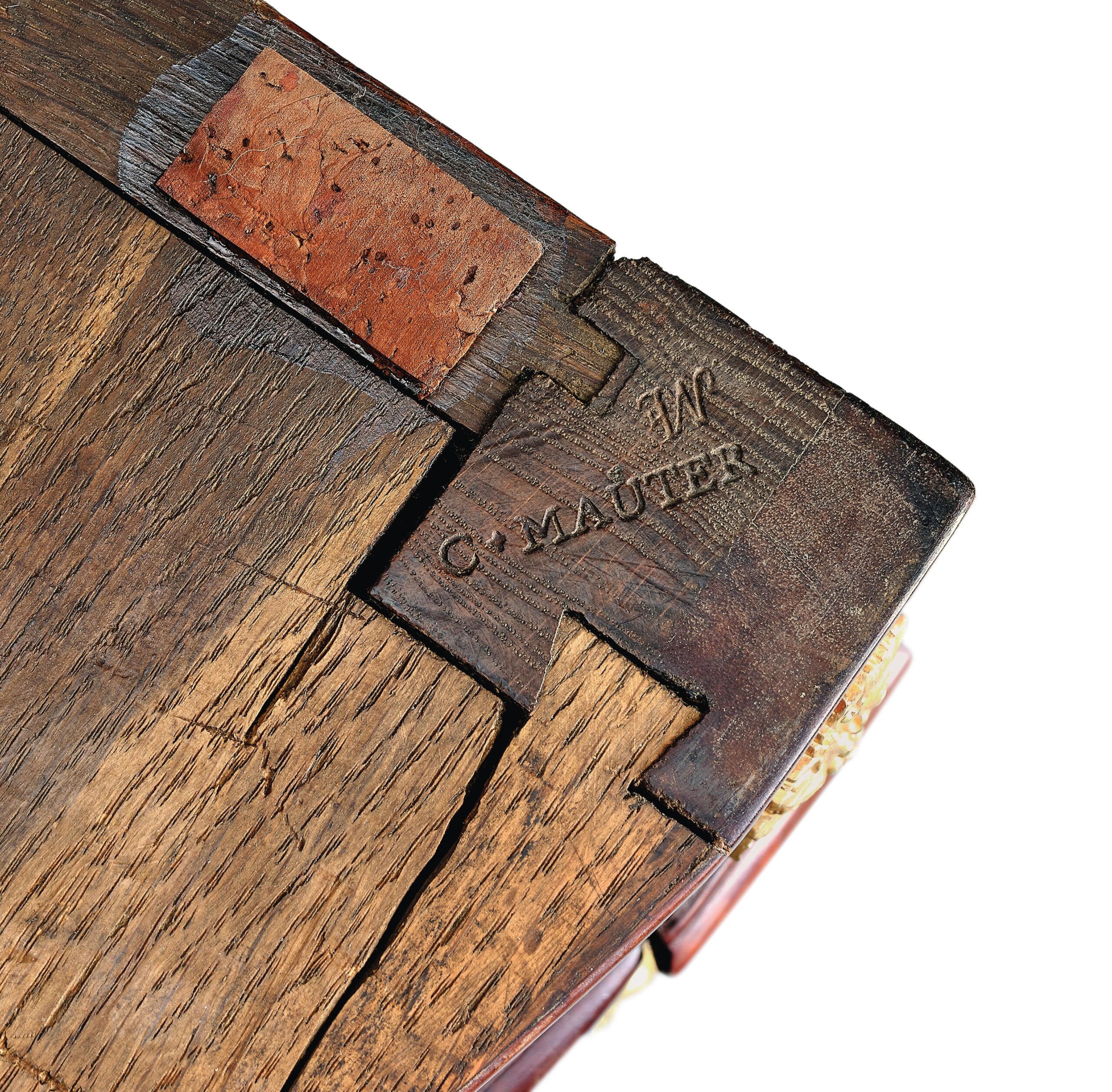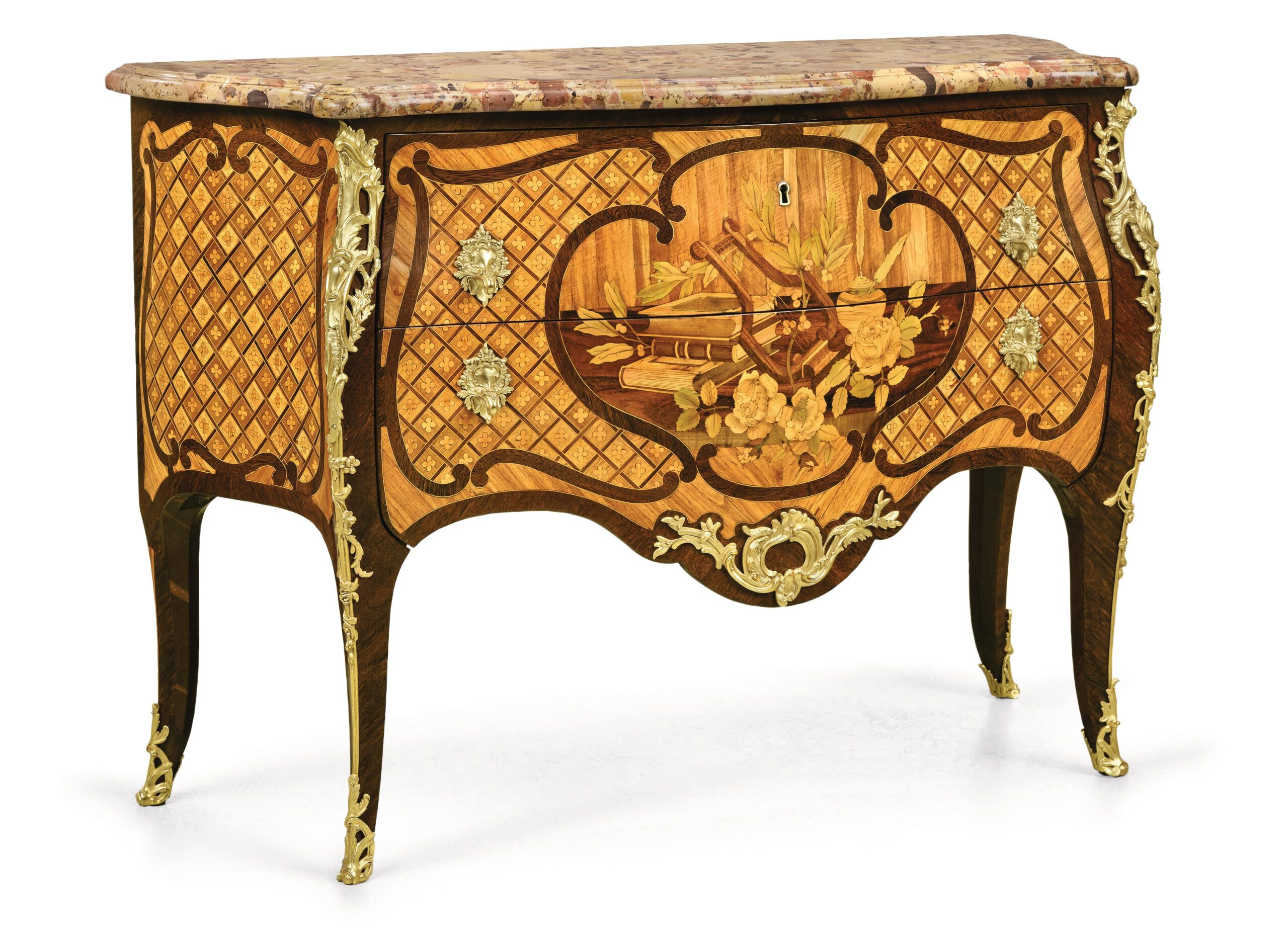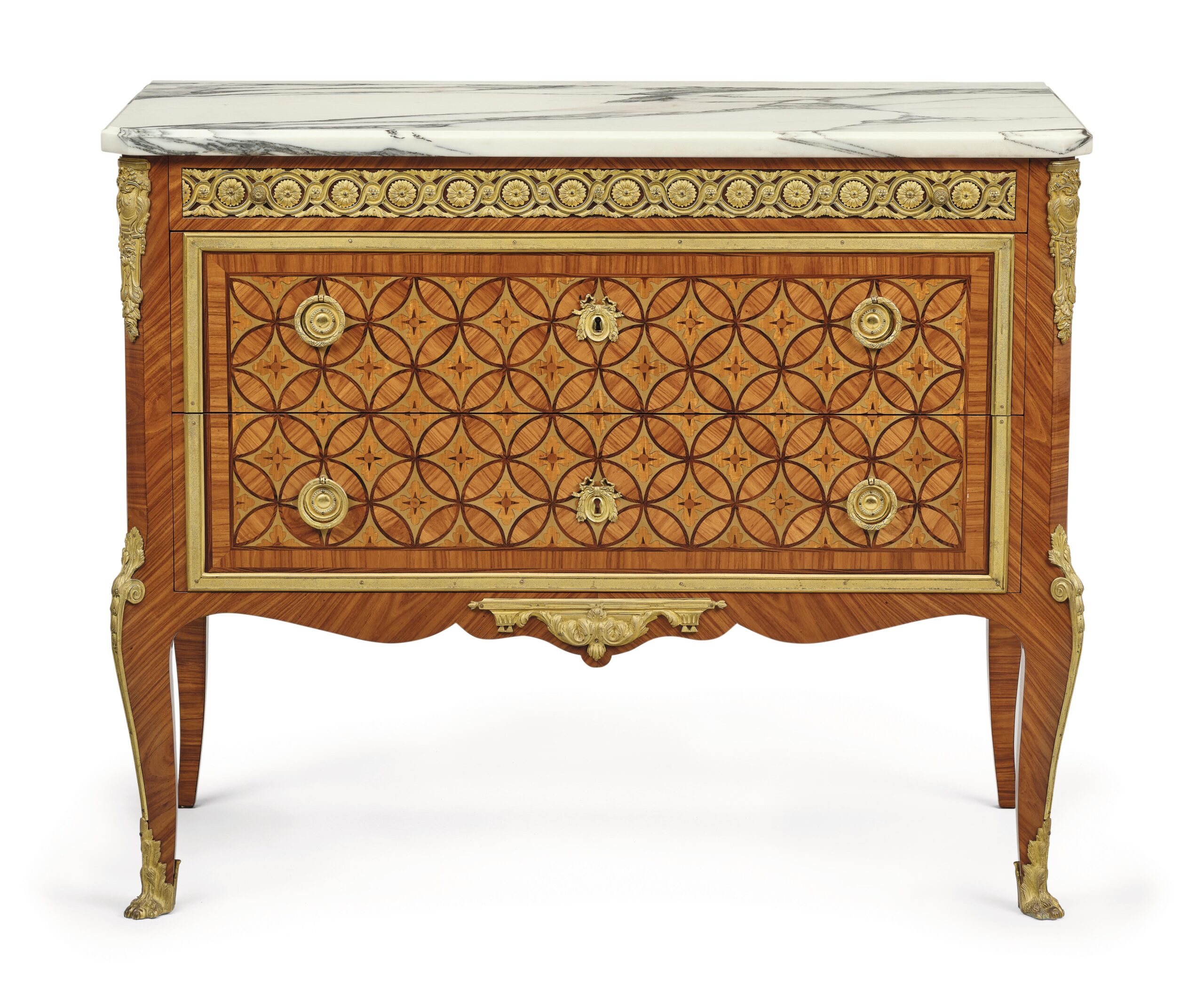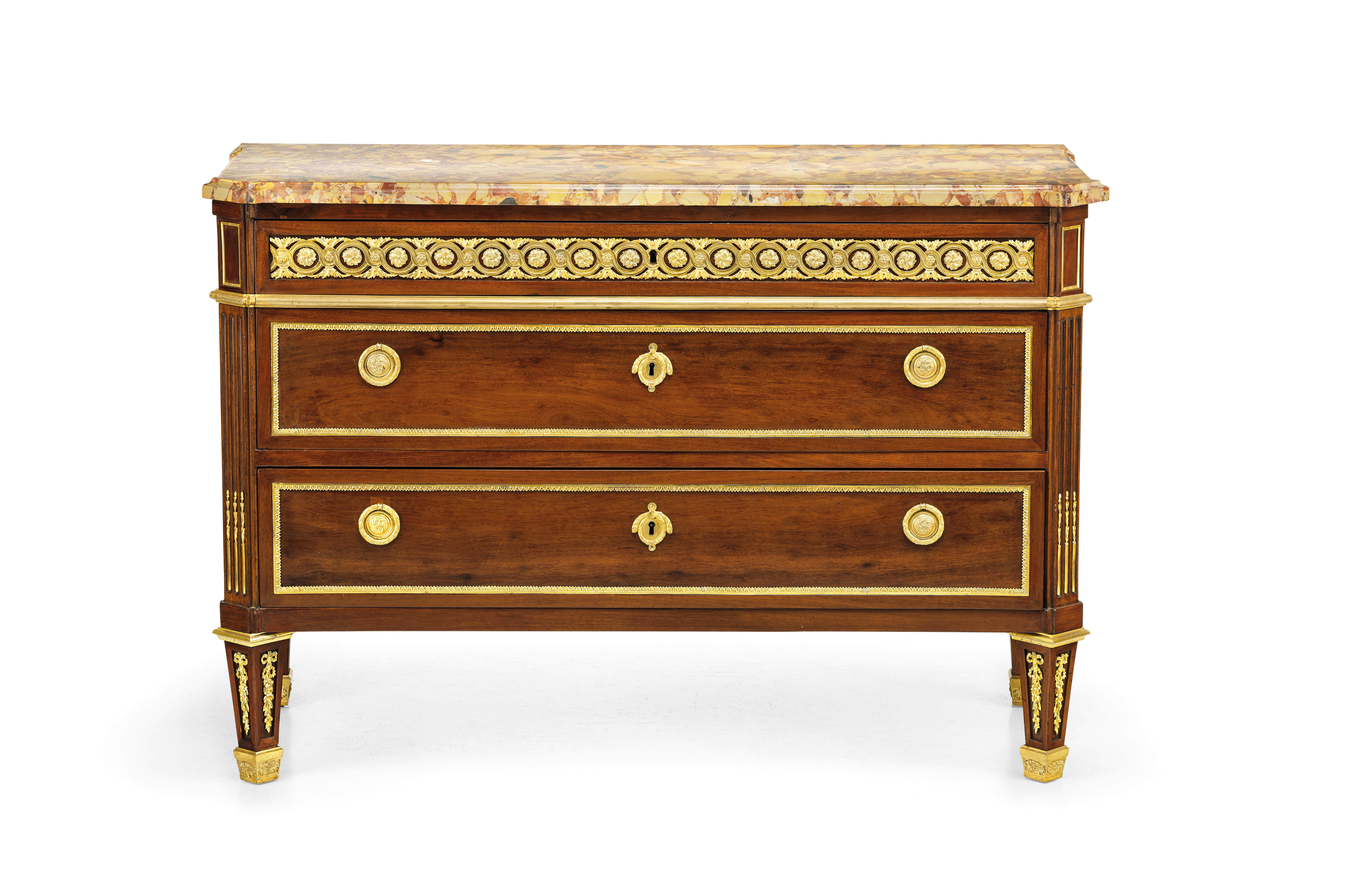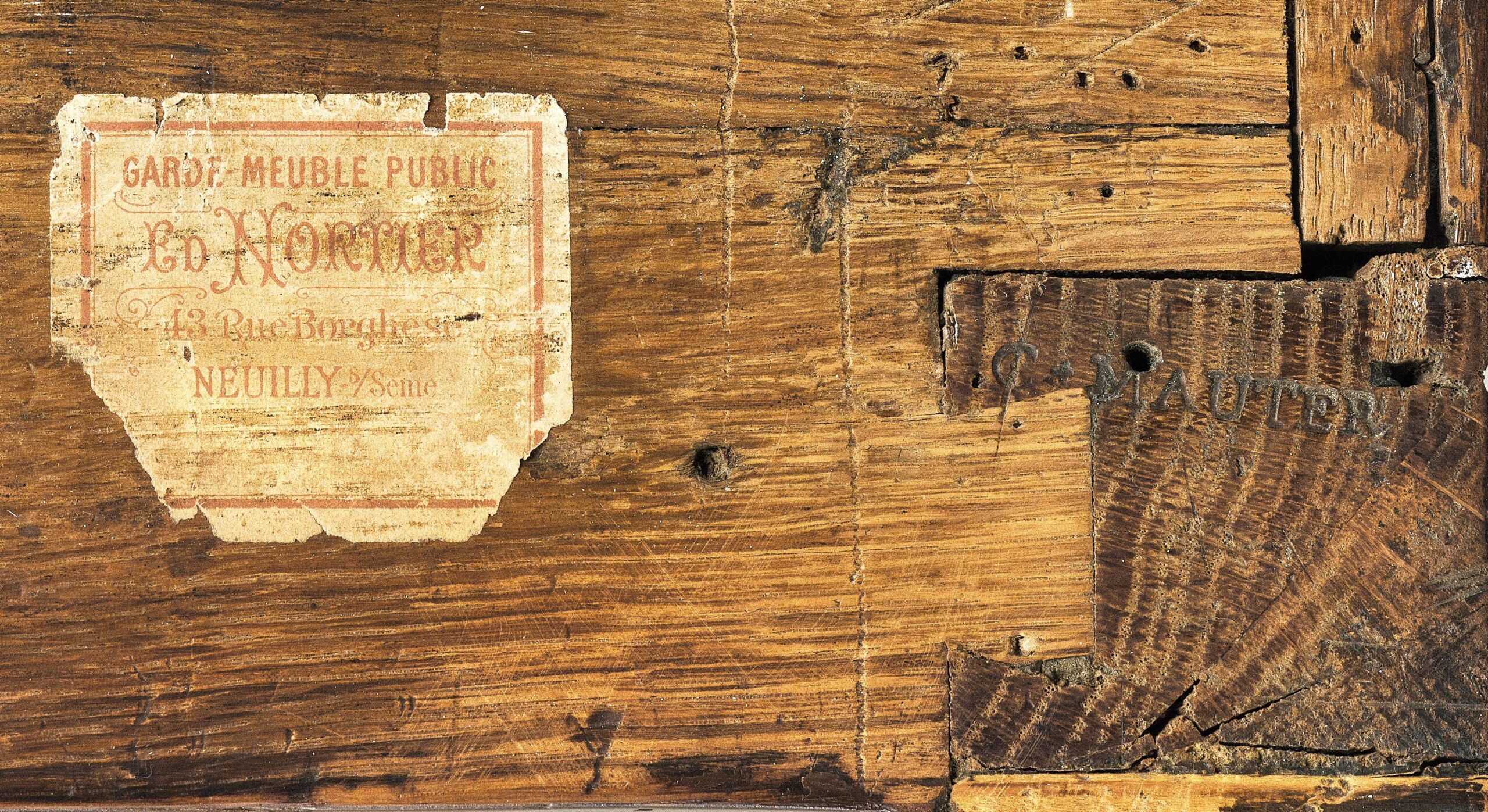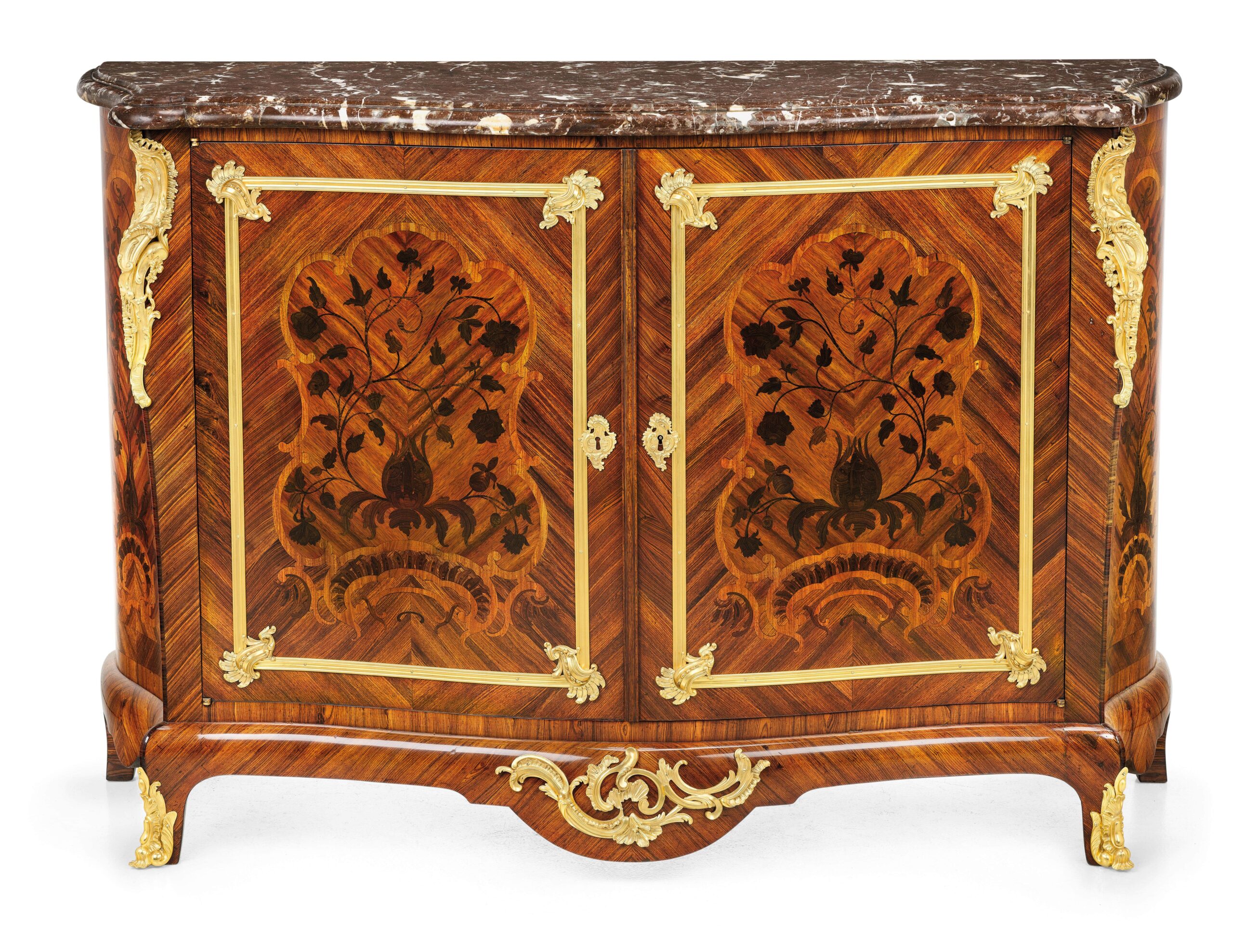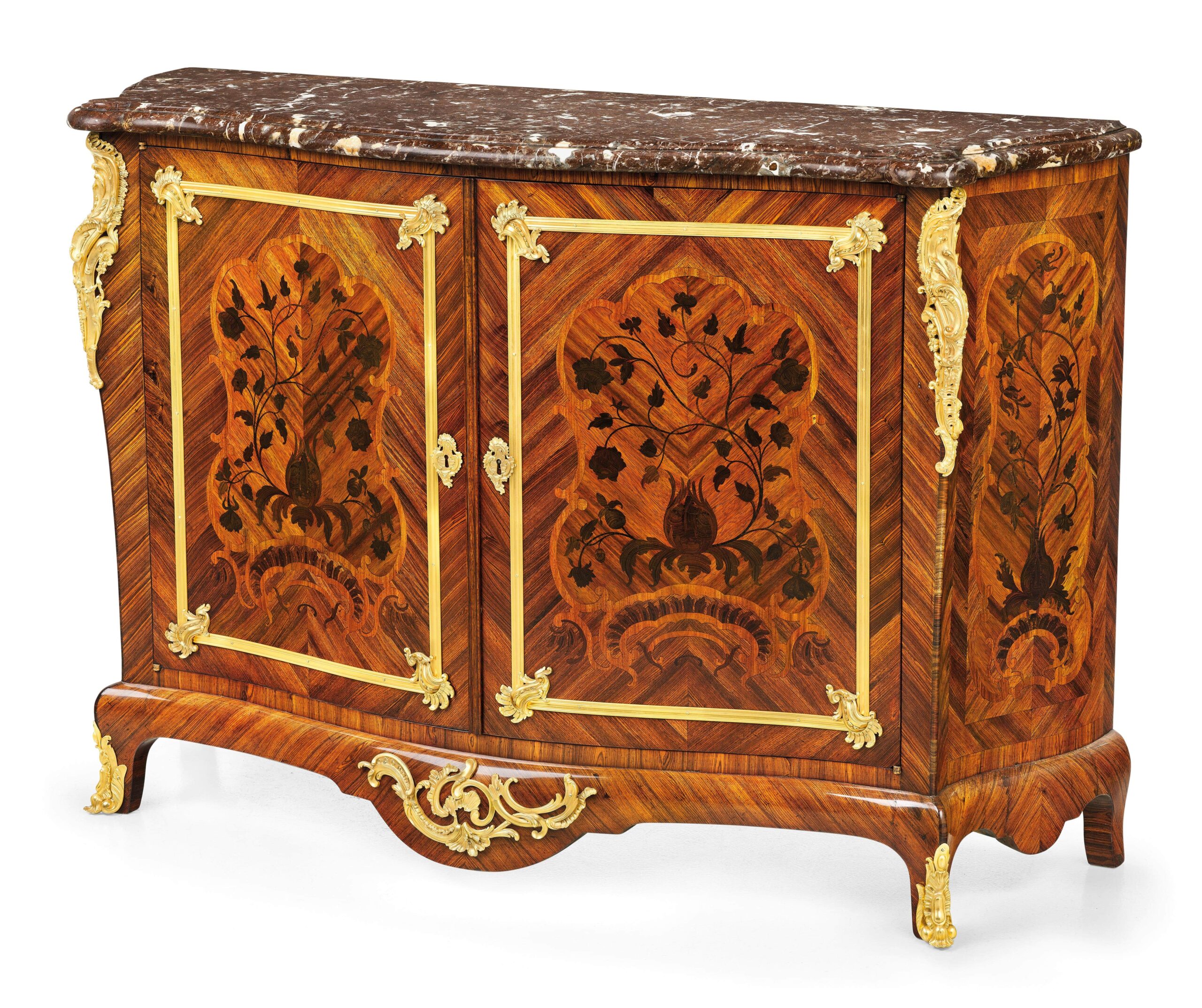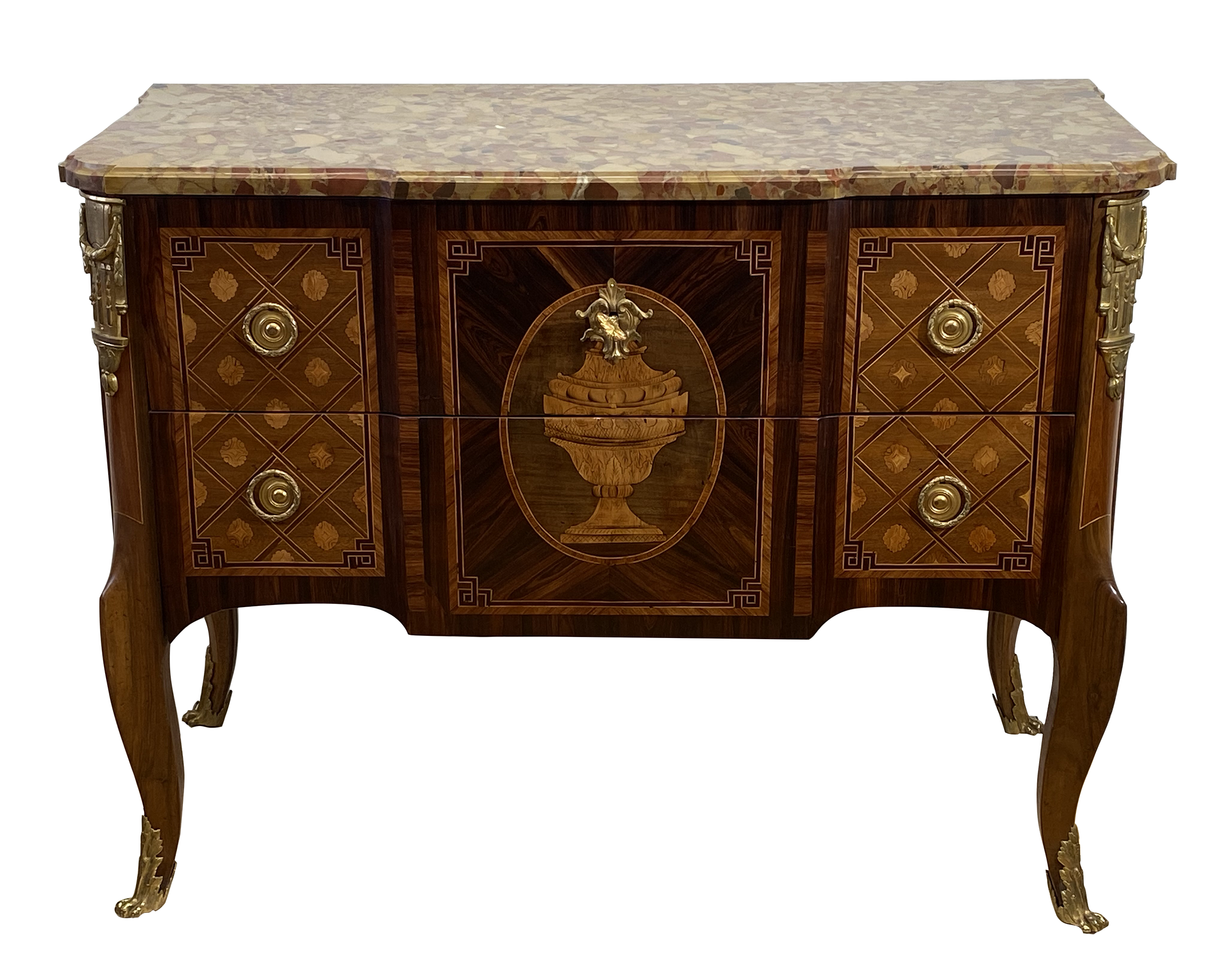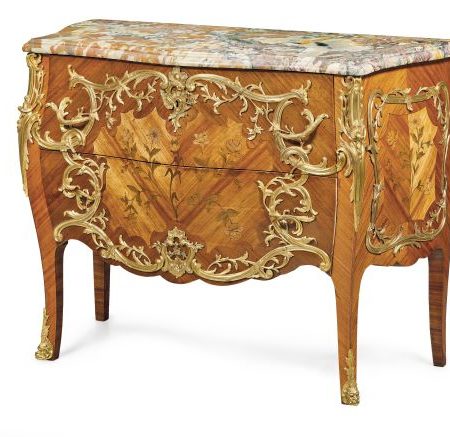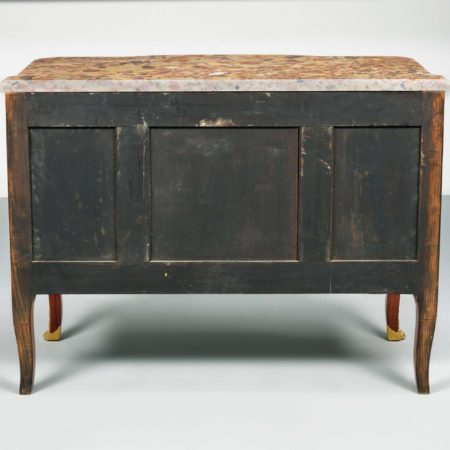Chest of drawers and sideboards

 €8,500.00
€8,500.00by the ebenist Conrad Mauter (1742 – 1810), in so-called “Demi Lune” form, Louis XVI period around 1780, partly mahogany wood and mahogany veneered, polished in traditional craftsmanship, fluted studs, conical feet, 3 drawers, 2 side doors, chiselled gilt bronze fittings, stamped C. MAUTER (master from 1777), profiled marble top, 85 x 114 x 44 cm,
expertly restored condition.
Conrad Mauter’s clients included the Comte de Artois, brother of King Louis XVI, and himself, later known as King
Charles X.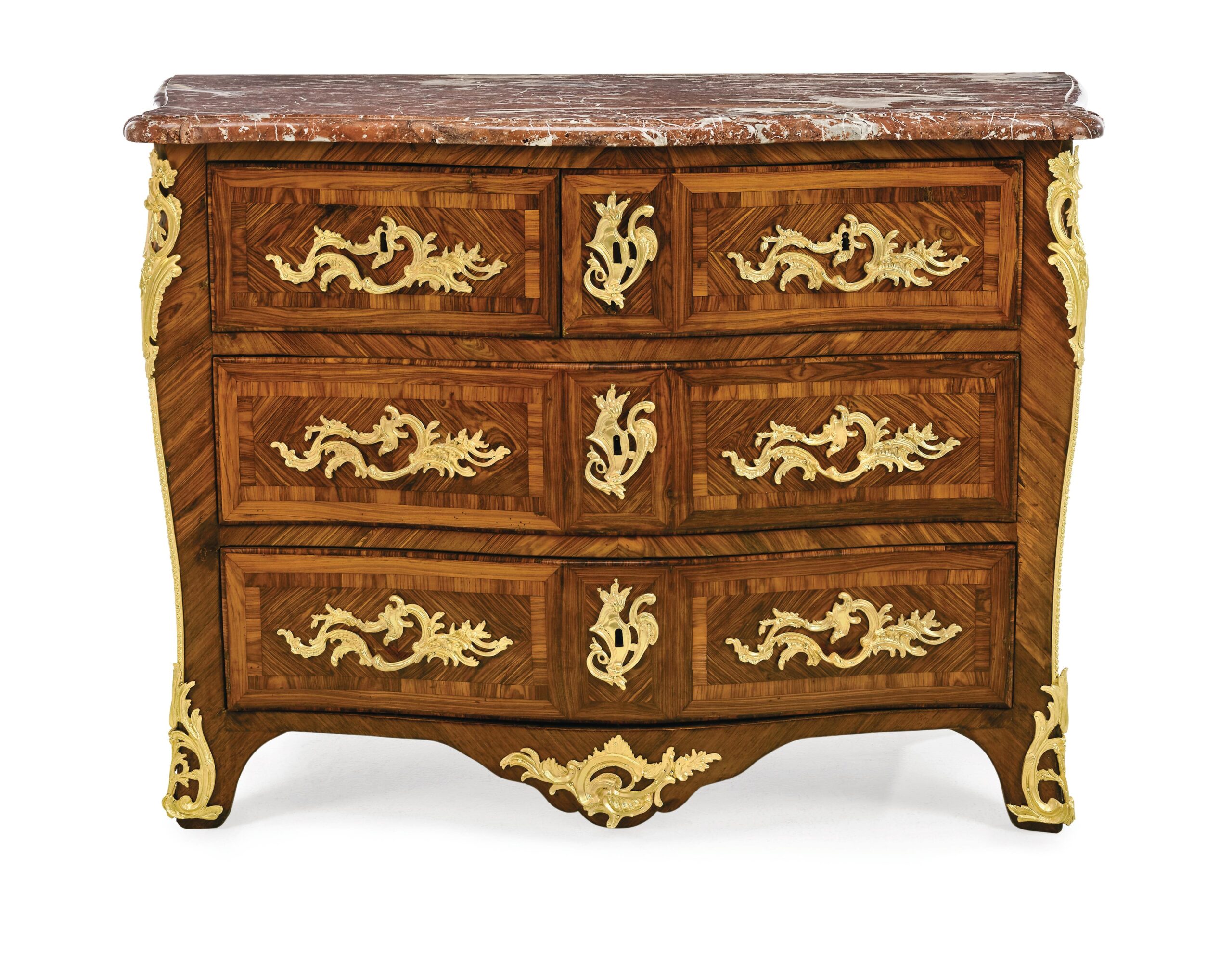
 Sold
SoldSo-called. “Tombeau”, Louis XV period, mid 18th century, various softwoods and hardwoods, rosewood veneer, field-marked, polished in traditional polished in traditional craftsmanship, 4 drawers, chiselled gilt bronze mounts, stamped D GENTY (Denis Genty,
Master from 1754), moulded marble top, approx. 82.5 x 114 x 59 cm, beautiful professionally restored condition.
 Sold
SoldIn the Louis XV style, modelled on 18th century examples 19th century models, curved hardwood and softwood hardwood and softwood body, primed in black and painted in in the form of landscape scenes and figures in lacquer technique decorated with raised lacquer, two drawers on the front, gilded bronze fittings, moulded marble top, 84.5 x 120 x 49.5 cm, beautiful professionally restored condition.
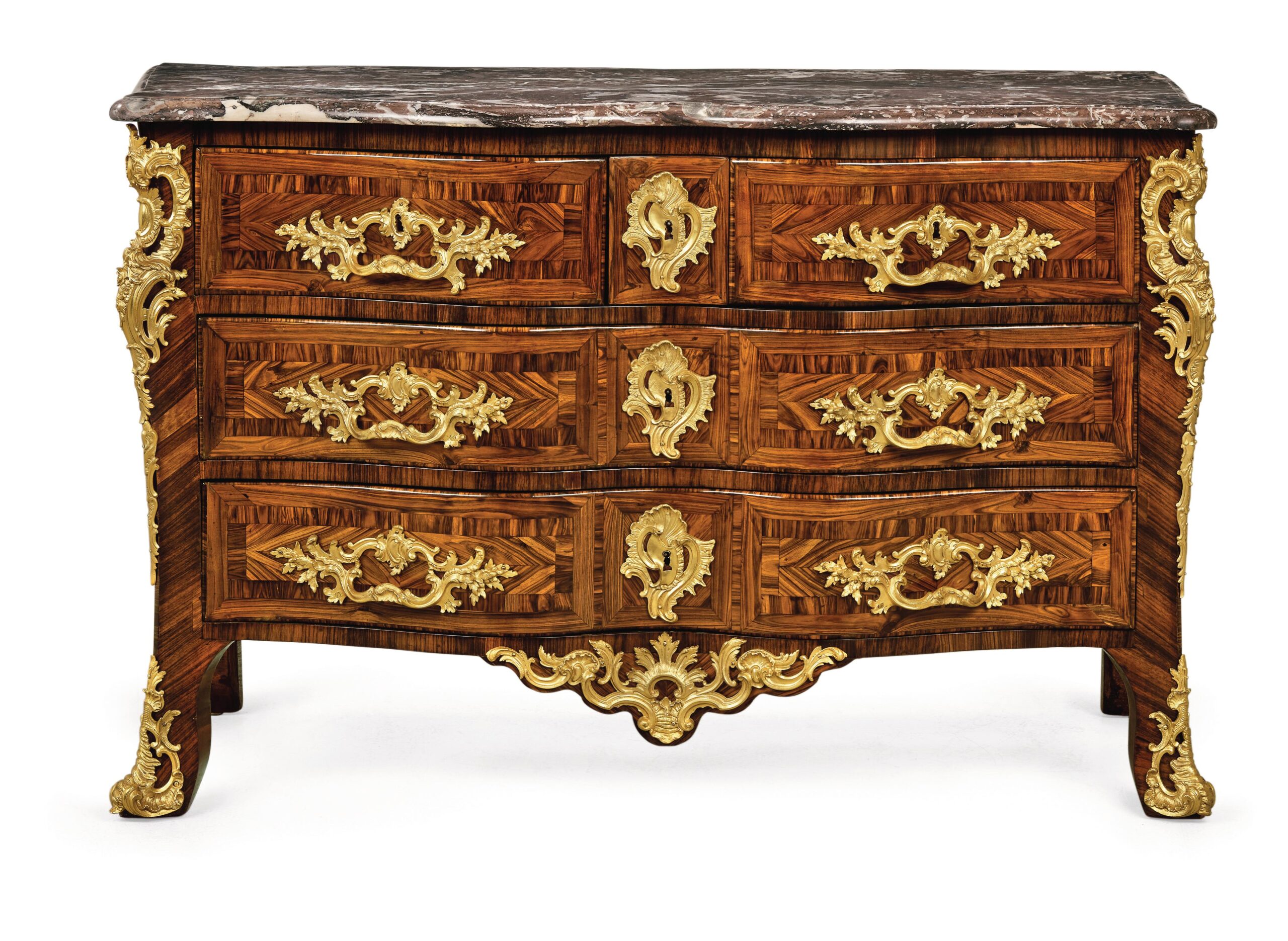
 Sold
Soldso-called. Tombeau, by the ebenist Jean-Charles Ellaume, (master from 1754), mid 18th century, curved softwood body, rosewood veneered, field-marked, polished in traditional craftsmanship, five drawers, double curved drawer fronts, “En Arbalete” rich finely chased and gilded bronze fittings, prof. Marble top, stamped J C ELLAUME and master’s mark, 88.5 x 133 x 56 cm, in beautiful, expertly restored condition. (MIN)
Subject to species protection (ASB)

 Sold
SoldEpoch Louis XV, by the ebenist Louis Moreau, (master from 1764) three-sided curved oak body, veneered with amaranth and rosewood and richly ornamented with various, partly dyed precious woods, floral and in the form of musical instruments and books, polished in traditional craftsmanship, two drawers, finely chased gilt bronze fittings, double profiled marble top, (Breche de Alep) 89 x 125 x 52 cm, beautiful professionally restored condition.
Subject to species protection (ASB)
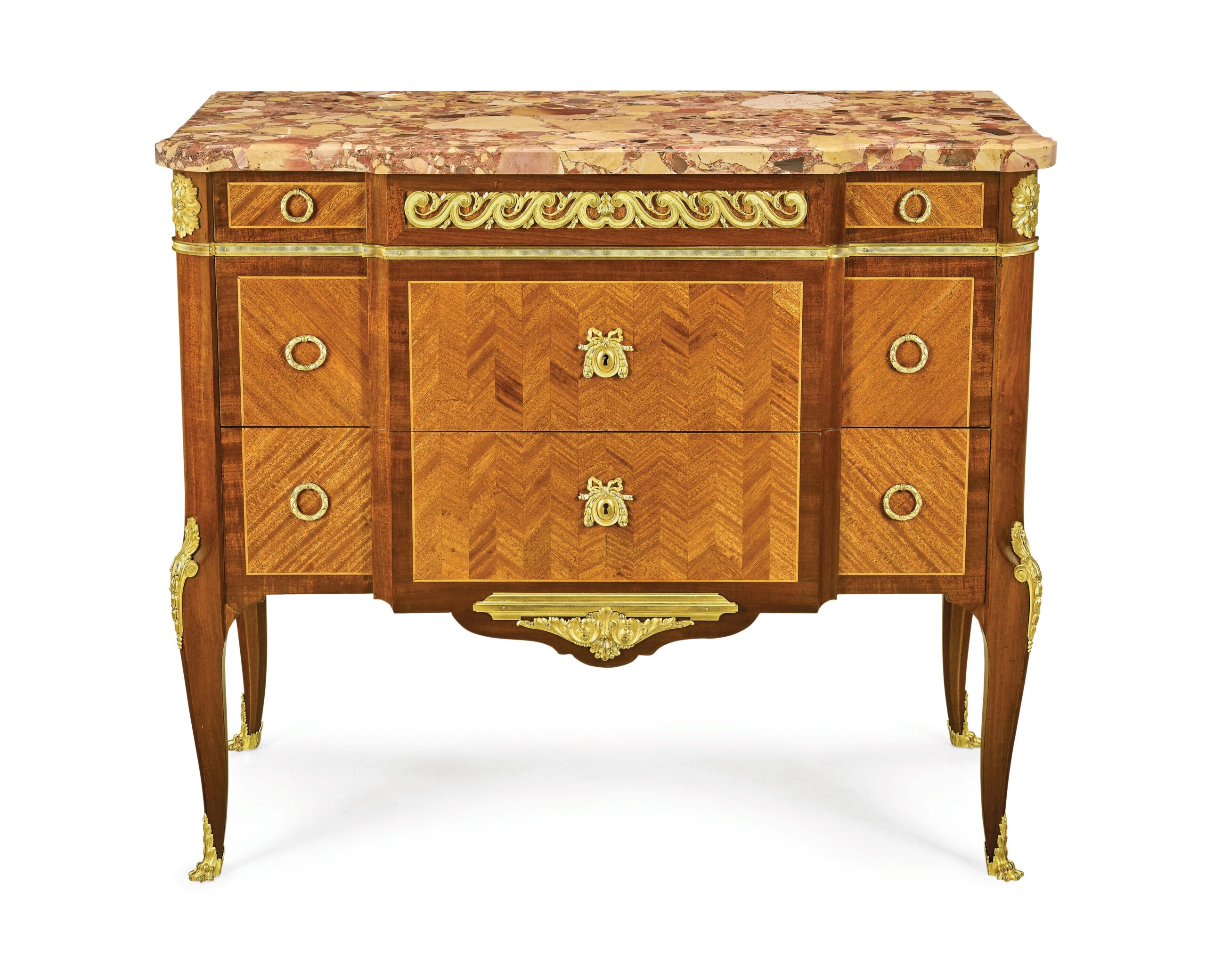
 Sold
SoldSalon chest of drawers in transitional style, by the Parisian firm Maison Krieger, late 19th century, oak body, veneered with mahogany and satinwood mahogany and satinwood, finely chased gilded bronze bronze mounts, hallmark, MON KRIEGER AMEUBLEMENT PARIS, moulded marble top marble top, 79 x 91 x 46 cm, beautiful professionally restored condition.

 €4,500.00
€4,500.00in transitional style, high-quality work from the first third of the 20th century, hardwood body, veneered with rosewood and finely marquetried with various precious woods in the shape of a field and in the form of circular ornaments, frosted, richly decorated with gilded chiselled bronze fittings, three drawers, marble top, 94 x 116 x 55 cm, restored condition.

 €9,000.00
€9,000.00- Chest of drawers from France, Transition period
- around 1770/75.
- The contrasting marquetry and choice of materials is reminiscent of works by Adrien Delorme.
- Various hardwoods and softwoods, veneered with rosewood and zebrano as well as cube-like marquetry with various precious woods, polished, 5 drawers at the front, the lower two “sans traverse”, protruding middle section, gilded bronze fittings, profiled marble top from a later period.
- 90 x 129 x 64 cm
- restored condition.

 €14,000.00
€14,000.00- Drawing room chest of drawers, by the French ebenist Conrad MAUTER, (master from 1777).
- Louis XVI period
- c. 1780/85
- Oak corpus, mahogany veneered, polished, sloping fluted pilasters, three drawers at the front, richly executed in fine quality, gilt bronze. Ornamental fittings and mouldings, moulded marble top, (Brech d Alep)
- Strike stamp on the right rear lug, C MAUTER,
- 89 x 131 x 56 cm
- Beautiful expertly restored condition.

 €5,200.00
€5,200.00Elegant Louis XVI style buffet, 2nd half of the XIX century – Etienne Simon Eugene Roudillon (1820-1891). Mahogany veneered oak corpus, 2 front and 2 arched corner drawers in the upper and lower part. Gilded and siliceous bronze mountings. Profiled, intact “Statuario” marble top. Restored condition, with nat. shellac hand polished surface. Dimensions: 108 x 179 x 52,5 cm

 €12,500.00
€12,500.00End of the 19th century, oak carcass, curved on three sides, rosewood veneered, marbled with various precious woods in end-grain technique in the form of leaf tendrils, polished, fine quality gilt bronze ornamental fittings, two doors at the front, elaborately profiled marble top, 112 x 165 x 60 cm, beautiful expertly restored condition.

 Sold
SoldThis beautiful french sideboard was modelled in the late 19th century on an 18th-century according to the model of Jean-Henri Riesener, The corpus curved on three sides, veneered with amaranth and marked with various precious woods florally and in the form of flowers in a vase. Polished, rich gilt bronze fittings, two doors, three drawers,

 €14,000.00
€14,000.00Oak body veneered with rosewood, rosewood and maple. Geometric marquetry with central medallion. 2 drawers “sans traverse”. Gilded, siliceous bronze fittings. Profiled “Brèche d’Alep” marble top. Restored condition, surface polished by hand with nat. shellac. Stamp “G.KEMP”. Dimensions: 89 x 120 x 56 cm.
Chest of Drawers and Sideboards – French Elegance from the 18th and 19th Century
Explore our exclusive collection of antique chests of drawers and sideboards, showcasing the craftsmanship and style of French artisans from the 18th and 19th centuries. Each piece in our collection is a unique masterpiece, rich in history and adorned with exquisite details that bring timeless elegance to your interiors.
Our Collection
Our antique chests of drawers feature stunning marquetry, intricate carvings, and luxurious materials such as mahogany, oak, and rosewood. Many pieces are enhanced with gilded bronze accents and finely polished marble tops, perfectly capturing the opulence and sophistication of a bygone era.
Our sideboards combine functionality with decorative appeal, elevating your living spaces. Whether in the Louis XV, Louis XVI, or Empire style, each piece tells its own story and stands as a testament to French craftsmanship.
Why Choose Antique Chests of Drawers and Sideboards?
- Timeless Beauty: These pieces seamlessly fit into both classic and contemporary interiors.
- Sustainability: Buying antiques is environmentally friendly and preserves cultural heritage.
- Uniqueness: Each piece is a one-of-a-kind work of art with a fascinating history.
Be Inspired
Whether you’re looking for a statement piece for your living room or a functional item with charm, our collection has the perfect piece for you. Visit our showroom in Vienna or explore our selection online.
You can find a more detailed description of the various styles in our BLOG.


